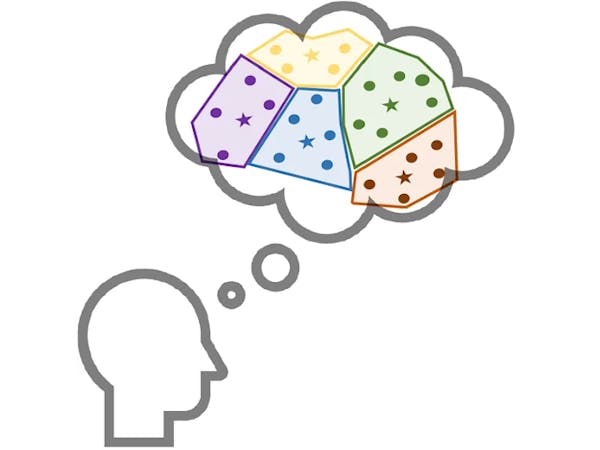Researchers from the Technical University of Denmark believe that artificial and natural intelligences may share more in common than we thought, at least in terms of the way they learn — thanks to a concept called “convexity.”
“We’ve developed new tools to measure convexity within the complex latent spaces of deep neural networks,” explains first author Lenka Tětková of the team’s work. “We tested these measures across various AI models and data types: images, text, audio, human activity, and even medical data. And we found that the same geometric principle that helps humans form and share concepts — convexity — also shapes how machines learn, generalise, and align with us.”
Researchers suggest that “convexity,” in which related ideas form shared conceptual spaces, may apply to both human and machine learning. (📷: Tětková et al)
The concept of “convexity” in cognitive science was originally proposed by Peter Gärdenfors, and is based on the mathematical concept of the same name — but rather than applying to geometry is instead used to refer to the formation of “conceptual spaces,” or “convex regions,” where related ideas cluster together. It’s key to the way the human mind can generalize from a small number of examples — and may also apply to how machine learning and artificial intelligence (ML and AI) models are trained, too.
“We found that convexity is surprisingly common in deep networks and might be a fundamental property that emerges naturally as machines learn,” says project lead Lars Kai Hansen. “Imagine that a concept, say, a cat, forms a nice, well-defined convex region in the machine before it’s even taught to identify cats specifically. Then it’s more likely to learn to identify cats accurately later on. We believe this is a powerful insight, because it suggests that convexity might be a useful indicator of a model’s potential for specific learning tasks.”
By scoring models based on their convexity, it may be possible to better understand — and improve — AI models. (📷: Tětková et al)
“By showing that AI models exhibit properties (like convexity) that are fundamental to human conceptual understanding,” Tětková continues, “we move closer to creating machines that ‘think’ in ways that are more comprehensible and aligned with our own. This is vital for building trust and collaboration between humans and machines in critical applications like healthcare, education, and public service. “While there’s still much to explore, the results suggest that the seemingly abstract idea of convexity may hold the key to unlocking new secrets on AI’s internal workings and bringing us closer to intelligent and human-aligned machines.”
The team’s work, which was part of a Novo Nordisk Foundation-funded project dubbed “Cognitive Spaces — Next Generation Explainable AI,” has been published in the journal Nature Communications under open-access terms.
